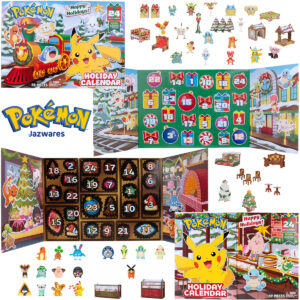
Toy prices are rising at the fastest pace on record, the result of stiff new tariffs on an industry where three out of four items come from China — an early example of how quickly new trade policies are driving up prices for U.S. consumers.
While the full impact of President Donald Trump’s new import taxes has yet to show up in economic data, analysts say the toy industry — which relies on a steady stream of relatively low-priced imports — offers clues about how higher costs could soon ripple through the economy.
The price of toys, games and playground equipment rose a record 2.2 percent between April and May, far outpacing the 0.1 percent inflation rate for all items that month, according to the Bureau of Labor Statistics.
Economists expect those increases to accelerate in coming months as more manufacturers and retailers are forced to pass on the higher costs.
“Prices have gone up, there’s no doubt about it,” said Isaac Larian, chief executive of MGA Entertainment, the toy giant behind L.O.L. Surprise, Little Tikes and Bratz. “But inflation is just beginning. There will be a domino effect: Prices will go even higher. Shelves will be empty and there will be a lack of innovation.”
More than 75 percent of toys sold in the United States come from China, according to Census Bureau data, making the industry one of the most vulnerable to the president’s trade war. Tariffs on Chinese imports have reached 145 percent this year, though they are currently at 30 percent, thanks to a 90-day reprieve that is set to expire in early August. In Keene, New Hampshire, Douglas, a brand of stuffed bears, flamingos and other animals, has raised prices by 5 percent to offset the recent tariffs. The company receives up to 30 containers of toys a month from Indonesia, Vietnam and China. Each container contains about $100,000 worth of goods, and so far this year, each has required tariff payments to the U.S. government ranging from $10,000 to $145,000, said the company’s president, Scott Clarke. He has had to pass those costs on to the small businesses he sells to — and most of them have no choice but to raise their prices, too. “It’s a tough situation: We absorb some of the tariffs, but there’s not much we can do,” he said. “Ultimately, this is a tax on American businesses, and it’s the consumer who’s paying.” Trump has suggested that the tariffs could lead to higher toy prices, but he has appeared to ignore the effects on families and businesses. While his administration granted the toy industry an exemption from the 25 percent tariffs on China during his first term, he has not offered any exemptions this time around. “Maybe the kids will have two dolls instead of 30 dolls, you know? And maybe the two dolls will cost a few dollars more than they normally would,” Trump told reporters at the White House in April.
“I’m just saying they don’t have to have 30 dolls,” he said later. “They can have three.” That assumption — that families will respond to higher costs by buying fewer toys — has altered retailers’ holiday plans. Many are playing it safe, sticking with classics like board games and dolls, and lower-priced crafts and games rather than big dollhouses and block sets. “We’re doubling down on bestsellers and we’re not trying anything new this year because we just don’t know what’s going to happen,” said Amy Rutherford, owner of Pippin Toy in Alexandria, Virginia. “People are already moving to cheaper items — spending $30 on a plush toy instead of $75, for example — and I think that’s going to continue.” At the same time, toy makers are rapidly raising prices by as much as 36 percent to offset the tariffs. Popular items like Jellycat plush toys, Crocodile Creek puzzles and Jellystone Designs’ Calm Down sensory bottles are costing more than they did at the beginning of the year, she said.
While the toy industry is largely made up of small and midsize companies, even the largest companies have warned about the consequences of the tariffs.
Last month, Mattel, the maker of Barbie and Hot Wheels, scrapped its financial outlook for the year, saying economic volatility and shifting trade policies made it “difficult to predict consumer spending” in the coming months.
Meanwhile, Hasbro, the company behind Monopoly and Play-Doh, laid off 3 percent of its workforce this month after earlier warnings that the tariffs could lead to job cuts and higher prices.
The toy industry has built a stronghold in China over the decades, relying on the country’s factories to produce low-priced products in short order. Toys sold in the U.S. are also required to undergo testing at third-party safety labs, mostly based in China, making the country a one-stop shop for the industry. As a result, nearly every toy in Caroline Rodrigues’s Merci Milo stores in Los Angeles and Portland, Ore., has some connection to China. She buys mostly from European, Japanese and Korean toy companies, but says nearly all of them rely on Chinese parts or manufacturing to some extent. “There’s just no way to escape China,” she said. “Even when I think I’m buying from a European company, the shipments are coming from China.” Rodrigues has already raised prices by as much as 20% to 30% to keep up with the tariffs and is closing her Portland store, where she has two employees, to save money. Rapidly changing trade policies and high import costs have made it nearly impossible to plan for the future.
“With every package I receive now, I pay a tariff. Sometimes it’s $50, sometimes it’s $1,000 or $2,500,” she said. “I’ll place an order and think, ‘OK, how much am I going to have to pay this time? It’s anyone’s guess.”


